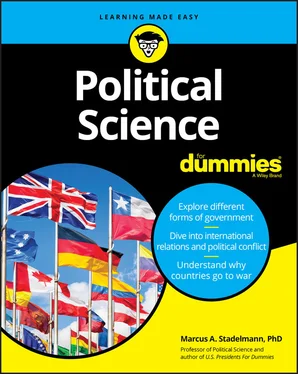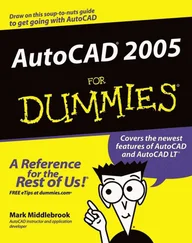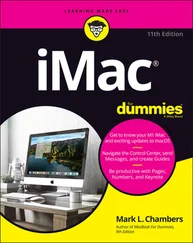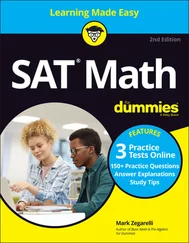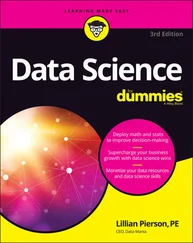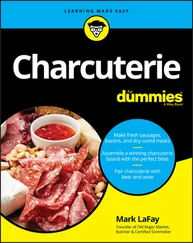8 Index
9 About the Author
10 Advertisement Page
11 Connect with Dummies
12 End User License Agreement
1 Chapter 4 TABLE 4-1 Forms of Government TABLE 4-2 Three Systems of Governments
1 Chapter 1FIGURE 1-1: Greek philosopher Aristotle is credited with founding political sci...FIGURE 1-2: James Madison is the developer of pluralism.
2 Chapter 4FIGURE 4-1: Adolf Hitler of Germany (a) and Joseph Stalin of Russia (b) were le...
3 Chapter 8FIGURE 8-1: The theory of hegemonic stability.
4 Chapter 9FIGURE 9-1: Hugo Grotius, father of international law. FIGURE 9-2: Jean Bodin created the concept of sovereignty.
5 Chapter 10FIGURE 10-1: United Nations headquarters in New York City. FIGURE 10-2: Mrs. Eleanor Roosevelt reporting to Pres. Harry Truman on her trip...
6 Chapter 11FIGURE 11-1: George F. Kennan, American diplomat and creator of the policy of c...FIGURE 11-2: Building the Berlin Wall in 1961.
7 Chapter 12FIGURE 12-1: Global military spending in percentages.
8 Chapter 13FIGURE 13-1: The KOF Index of Globalization.
9 Chapter 14FIGURE 14-1: Greek philosopher Socrates. FIGURE 14-2: Early Western political philosopher, Plato. FIGURE 14-3: Greek philosopher and creator of the academy, the Lyceum, Aristotl...
10 Chapter 15FIGURE 15-1: Saint Augustine, a founding father of the political theory of Chri...FIGURE 15-2: Saint Thomas Aquinas, Catholic theorist and author of Summa Theolo ...FIGURE 15-3: Niccolo Machiavelli, influential Renaissance philosopher. FIGURE 15-4: Thomas Hobbes, a founding father of modern political theory. FIGURE 15-5: John Locke, English political philosopher and godfather of classic...FIGURE 15-6: Montesquieu, political theorist and author of The Spirit of the La ...FIGURE 15-7: Jean Jacques Rousseau, author of The Social Contract. FIGURE 15-8: Edmund Burke, statesman and philosopher. FIGURE 15-9: Adam Smith, founding father of classical liberalism.
11 Chapter 16FIGURE 16-1: Benito Mussolini, Prime Minister of Italy. FIGURE 16-2: Jean-Marie Le Pen, founder of the National Front. FIGURE 16-3: Marine Le Pen, chair of the National Rally party.
12 Chapter 17FIGURE 17-1: Karl Marx, the father of Communism. FIGURE 17-2: Lenin, Russian revolutionary and political theorist. FIGURE 17-3: Mao Zedong, founding father of the People’s Republic of China.
1 Cover
2 Table of Contents
3 Begin Reading
1 i
2 ii
3 1
4 2
5 3
6 5
7 6
8 7
9 8
10 9
11 10
12 11
13 12
14 13
15 14
16 15
17 16
18 17
19 19
20 20
21 21
22 22
23 23
24 24
25 25
26 26
27 27
28 28
29 29
30 30
31 31
32 32
33 33
34 34
35 35
36 36
37 37
38 38
39 39
40 40
41 41
42 42
43 43
44 44
45 45
46 47
47 48
48 49
49 50
50 51
51 52
52 53
53 54
54 55
55 56
56 57
57 58
58 59
59 60
60 61
61 63
62 64
63 65
64 66
65 67
66 68
67 69
68 70
69 71
70 72
71 73
72 74
73 75
74 76
75 77
76 78
77 79
78 80
79 81
80 82
81 83
82 84
83 85
84 86
85 87
86 88
87 89
88 90
89 91
90 92
91 93
92 94
93 95
94 96
95 97
96 98
97 99
98 100
99 101
100 102
101 103
102 104
103 105
104 106
105 107
106 108
107 109
108 110
109 111
110 113
111 114
112 115
113 116
114 117
115 118
116 119
117 120
118 121
119 122
120 123
121 124
122 125
123 126
124 127
125 128
126 129
127 130
128 131
129 132
130 133
131 134
132 135
133 136
134 137
135 138
136 139
137 140
138 141
139 142
140 143
141 144
142 145
143 146
144 147
145 148
146 149
147 150
148 151
149 152
150 153
151 154
152 155
153 156
154 157
155 158
156 159
157 160
158 161
159 162
160 163
161 164
162 165
163 166
164 167
165 168
166 169
167 170
168 171
169 172
170 173
171 174
172 175
173 176
174 177
175 178
176 179
177 180
178 181
179 182
180 183
181 184
182 185
183 186
184 187
185 188
186 189
187 190
188 191
189 192
190 193
191 194
192 195
193 196
194 197
195 198
196 199
197 200
198 201
199 202
200 203
201 204
202 205
203 206
204 207
205 208
206 209
207 210
208 211
209 212
210 213
211 215
212 216
213 217
214 218
215 219
216 220
217 221
218 222
219 223
220 224
221 225
222 226
223 227
224 228
225 229
226 230
227 231
228 232
229 233
230 234
231 235
232 236
233 237
234 238
235 239
236 240
237 241
238 242
239 243
240 244
241 245
242 246
243 247
244 248
245 249
246 250
247 251
248 252
249 253
250 254
251 255
252 256
253 257
254 258
255 259
256 260
257 261
258 262
259 263
260 264
261 265
262 266
263 267
264 268
265 269
266 271
267 272
268 273
269 274
270 275
271 276
272 277
273 278
274 279
275 280
276 281
277 282
278 283
279 284
280 285
281 286
282 287
283 288
284 289
285 290
286 291
287 292
288 293
289 294
290 295
291 297
292 298
293 299
294 300
295 301
296 302
297 303
298 304
299 305
300 306
301 307
302 308
303 309
304 310
305 311
306 312
307 313
308 314
309 315
310 316
311 317
312 318
313 319
314 320
315 321
316 322
317 323
As a professor of political science, some of the most frequently asked questions I receive from students include the following: Why study political science? Why should different forms of government and world politics matter to me? Why study political theory and learn about foreign cultures? Most students assume that political events occurring either at home or in faraway countries don’t impact their daily lives and are therefore not too concerned about them. Why would someone in Texas care about a new senator being elected in Oregon? Why would a college student living comfortably in the U.S. care about what’s happening in Central Asia? What is globalization, how does it impact us, and why care about it? Why read a book written by an old Greek guy who has been dead for thousands of years? Because learning these concepts helps define how people come together and the importance of being a citizen of the world.
By reading this book and becoming a student of political science, you’ll acquire the necessary tools to become familiar with, study, and hopefully become interested in both domestic and international political affairs. I hope that this political interest will then get you involved and encourage you to participate in politics.
Читать дальше
